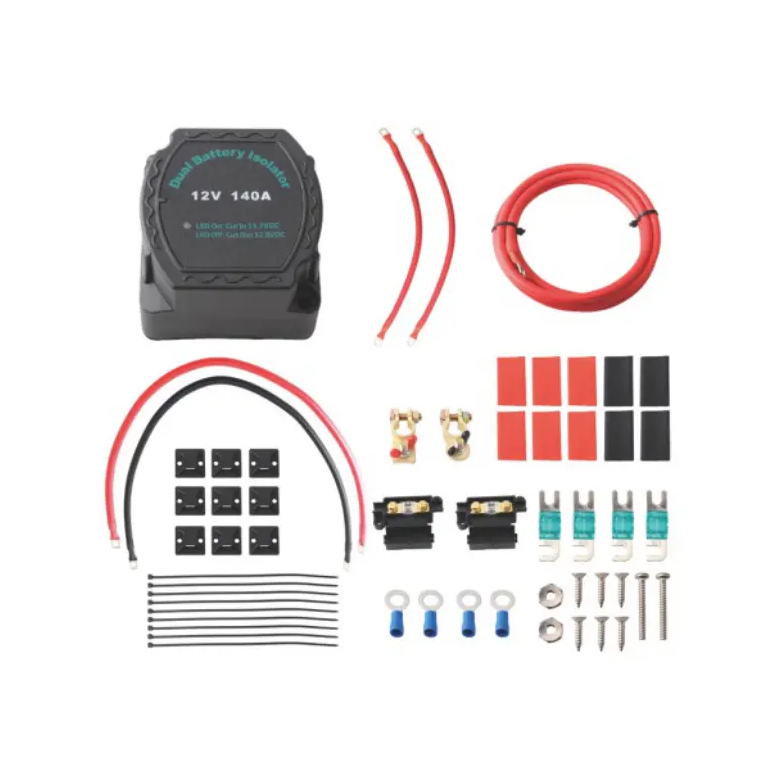Impact of Dual Battery Isolators on Vehicle Electrical Systems

Importance of Electrical Compatibility
When integrating a dual battery isolator into a vehicle, ensuring compatibility with the existing electrical system is crucial. A Dual Battery Isolator Factory designs isolators to work alongside factory-installed wiring, alternators, and control units without introducing interference. Vehicles have increasingly complex electrical systems that include engine control modules, infotainment devices, lighting circuits, and safety features. Any unintended electrical interference or voltage fluctuations caused by an isolator can disrupt normal operation, leading to system errors, reduced performance, or potential safety hazards.
Potential Sources of Electrical Interference
Electrical interference from isolators can manifest as voltage drops, transient spikes, or noise in sensitive circuits. Older vehicles with minimal shielding may be more prone to interference, while modern vehicles often have sophisticated bus systems such as CAN or LIN that require stable voltage and low electromagnetic noise. A poorly designed isolator could inject current surges or harmonic noise into the system, affecting sensors, gauges, or electronic control units. A reputable Dual Battery Isolator Factory addresses these concerns through careful circuit design, grounding, and electromagnetic shielding.
Design Features Ensuring System Compatibility
Modern dual battery isolators incorporate several features to maintain vehicle electrical system integrity. Soft-start mechanisms gradually introduce load to prevent voltage dips, while voltage-sensing and current-limiting circuits protect both the primary and auxiliary battery. Some isolators include integrated filtering components to suppress electrical noise and prevent interference with sensitive electronics. In addition, isolators are designed to operate within standard automotive voltage ranges, ensuring that the alternator, battery, and other connected devices function reliably under all conditions.
Installation Considerations
Proper installation is essential for maintaining compatibility and preventing interference. Isolators should be installed close to the batteries with appropriately sized cables and securely connected terminals. Fuses or circuit breakers may be added to protect both the isolator and vehicle wiring from overload conditions. A well-executed installation minimizes voltage drops and reduces the risk of electrical noise. A Dual Battery Isolator Factory often provides detailed installation guidelines, including recommendations for cable routing, grounding, and connection points, to maintain system harmony and ensure safe operation.
Energy Efficiency Advantages Compared with Traditional Systems
Beyond compatibility, modern dual battery isolators offer energy efficiency benefits over traditional or manual battery management methods. By intelligently controlling the charging and isolation of each battery, they prevent unnecessary power loss through overcharging or cross-draining. Optimized electronic control reduces heat generation and minimizes wasted energy in the system. Efficient isolators also extend battery life by maintaining proper charge levels, which decreases the frequency of replacement and reduces energy consumed in battery manufacturing. These improvements contribute to lower operational costs and a smaller environmental footprint.
Conclusion
Ensuring compatibility with a vehicle’s original electrical system is a critical design consideration for dual battery isolators. A Dual Battery Isolator Factory addresses potential interference through voltage control, current limiting, noise suppression, and careful circuit design. Proper installation further ensures that the isolator integrates seamlessly with existing wiring and electronic components. In addition to maintaining system integrity, modern isolators enhance energy efficiency by optimizing power flow, reducing heat generation, and extending battery life. These advantages make dual battery isolators a safe, reliable, and energy-conscious solution for vehicles with multiple battery systems.
12V
OEM: X Retrofitted vehicles RVS, yachts solar charging units
- Art
- Causes
- Crafts
- Dance
- Drinks
- Film
- Fitness
- Food
- Jogos
- Gardening
- Health
- Início
- Literature
- Music
- Networking
- Outro
- Party
- Religion
- Shopping
- Sports
- Theater
- Wellness
